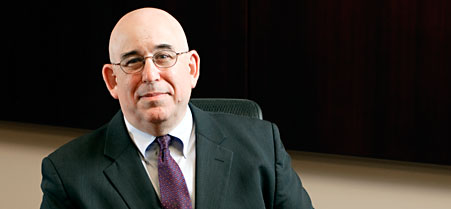Agencies see the potential for savings with cloud computing, but jobs could be on the line.
 060710mintzNGins
(Jun. 7) -
Shrinking IT staff is tough because they have many roles, says Powertek's Daniel Mintz.
060710mintzNGins
(Jun. 7) -
Shrinking IT staff is tough because they have many roles, says Powertek's Daniel Mintz.
As federal agencies consider moving information technology systems to the cloud, there is much talk of the savings that will result from outsourcing computer networks and applications to contractors. Officials are quick to say this consolidation of IT infrastructure will significantly reduce computing costs. For example, the General Services Administration moved USA.gov, its all-encompassing government portal, to Internet-based service providers in May 2009 and saw $1.7 million in infrastructure savings. But few have defined the impact on the workforce. Observers caution that, as agencies adopt cloud computing, jobs could be at stake.
When companies outsource IT, they have to decide what to do with the workers who previously managed those services, according to Darrell West, vice president and director of governance studies at the Brookings Institution and author of the recent study "Saving Money Through Cloud Computing."
"In looking at government agencies, of course, it's always a challenge to reassign workers or lay off workers if you no longer need them. The extent to which you can achieve cost savings depends a lot on how your agency feels about layoffs and/or staff reassignments," he says. Los Angeles officials, for example, moved e-mail servers to the cloud and then eliminated nine positions, in what West calls a substantial downsizing for the city's IT department.
Eliminating jobs has been "a big part of the conversation in the private sector when companies migrate to the cloud, but it hasn't attracted as much attention among public agencies because the subject of staff layoffs is radioactive," he says.
According to Daniel Mintz, chief operating officer at Powertek Corp. and chief information officer at the Transportation Department from 2006 to 2009, labor savings present two challenges. The first is that in large organizations, even more so in government than in the private sector, the processes required to shrink IT staffs are disruptive and difficult. The second issue is these employees perform multiple job functions, only one of which would be eliminated. West says he found agencies reported a 25 percent to 50 percent savings by moving IT operations to the cloud, which translates into billions of dollars for the federal government, depending on the scope of the transition. "Many factors go into such assessments, such as the nature of the migration, a reliance on public versus private clouds, the need for privacy and security, the number of file servers before and after migration, the extent of labor savings, and file server storage utilization rates," West wrote in his study.
While agencies have cut costs by moving to cloud platforms, there is no definitive estimate of how much, says federal Chief Information Officer Vivek Kundra. The Office of Management and Budget is collecting data from agencies about their savings and human capital needs, with the goal of releasing concrete figures, he adds.
The Brookings study drew sharp objections from observers who see job reductions as the wrong goal. "Going after jobs first is totally misguided," says Ed Meagher, director of strategy for health affairs at SRA International and a former deputy chief information officer at the Interior Department. "The first savings, the real savings that must be had is in infrastructure consolidation."
Meagher has criticized what he calls "meat-cleaver management," noting that federal agencies tend to mishandle hiring freezes and layoffs. The government is operating with a 1950s mentality when it comes to infrastructure and business processes, and only after agencies have evaluated those things should they consider whether they have the "right skills with the right people in the right place," he says.
Many officials agree the real efficiencies won't come from workforce cuts, but rather a realignment of IT positions with mission-critical functions. "Government personnel who understand the mission of the department are precious people," Mintz says. "The focus is on the wrong thing. The problem is there are these demands we're placing on the government workforce and they're so tied up with things unrelated to the mission."
Cloud computing allows agencies to move employees to areas where new or additional skill sets contribute to agency functions, says David McClure, associate administrator of GSA's Office of Citizen Services. "We found we could move people into contract oversight, analytics and looking at the performance of applications and application development, really where a lot of innovation and high-value work needs to be done for primary agency business needs," he says.
For example, by centralizing IT infrastructure rather than using desktops across many field offices, employees at the Federal Railroad Administration were able to focus on IT systems that support inspection services. "In my mind, too many people regard [cloud computing] as magic, when all it really is, is economics supported by technology. The costs are still the costs at the end of the day," Mintz says.
Employees still will be needed to refocus on the business challenges the agency is trying to solve, according to Chris Kemp, NASA's chief technology officer. That doesn't mean the IT group will have nothing to do, but what they do will be a lot more relevant to stakeholders, he adds.
CIOs and their staffs spend too much time on managing hardware, software and vast data centers, and the goal is to shift focus to consumer-oriented services that address public needs, Kundra says. Employees will need to be retrained in 21st century technologies, something the private sector does well, he adds.
NEXT STORY: Microsoft offers cloud for politicians





